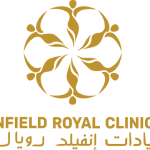Introduction
Body contouring is a Cosmetic Surgery procedure aimed at reshaping and enhancing the contours of the body. It involves removing excess fat and skin to create a more toned and sculpted appearance. This transformative procedure can help individuals achieve their desired silhouette and boost their confidence.
Understanding Body Contouring
Different Techniques of Body Contouring
Liposuction
Liposuction is one of the most common body contouring techniques. It involves removing stubborn fat deposits from specific areas of the body, such as the abdomen, thighs, hips, and arms, using a suction technique.
Tummy Tuck
A tummy tuck, also known as abdominoplasty, is a surgical procedure that removes excess skin and fat from the abdomen while tightening the abdominal muscles to create a smoother, firmer midsection.
CoolSculpting
CoolSculpting is a non-invasive body contouring technique that uses controlled cooling to freeze and eliminate fat cells without damaging the surrounding tissue. It is particularly effective for targeting small pockets of fat resistant to diet and exercise.
Benefits of Body Contouring
Body contouring offers numerous benefits beyond aesthetic enhancement:
- Enhances Body Shape: Body contouring can help individuals achieve a more proportionate and balanced physique.
- Boosts Confidence: By improving their appearance, body contouring can significantly boost self-esteem and confidence.
- Improves Physical Health: Removing excess fat can reduce the risk of certain health issues such as diabetes, heart disease, and joint pain.
Who is a Candidate for Body Contouring?
Before undergoing body contouring, it's essential to determine if you're a suitable candidate. Factors to consider include:
- Body Mass Index (BMI): Individuals with a BMI within a healthy range are typically better candidates for body contouring.
- Overall Health: Good physical and mental health are essential for a successful outcome.
- Realistic Expectations: Understanding the limitations of body contouring and having realistic expectations are crucial for satisfaction with the results.
Preparing for Body Contouring
Prior to the procedure, patients will undergo a thorough consultation with a specialist to discuss their goals, medical history, and any concerns. Pre-operative instructions may include:
- Quitting Smoking: Smoking can impair the body's ability to heal, so patients are usually advised to quit smoking several weeks before surgery.
- Avoiding Certain Medications: Some medications and supplements may increase the risk of bleeding and other complications, so patients may be instructed to avoid them before surgery.
The Body Contouring Procedure
The body contouring procedure varies depending on the technique used and the patient's specific needs. Generally, it involves the following steps:
- Anesthesia Options: Body contouring may be performed under local or general anesthesia, depending on the extent of the procedure and the patient's preferences.
- Surgical Techniques: The surgeon will use various surgical techniques to remove excess fat and skin and reshape the body contours.
- Recovery Time: Recovery time varies depending on the extent of the procedure and individual healing factors. Patients may experience bruising, swelling, and discomfort in the days following surgery.
Post-Operative Care
Following body contouring surgery, patients will receive specific instructions from their surgeon to promote healing and minimize complications. This may include:
- Managing Discomfort: Pain medication and compression garments may be prescribed to manage discomfort and reduce swelling.
- Following Surgeon's Instructions: Patients should follow all post-operative instructions carefully to ensure a smooth recovery and optimal results.
Risks and Complications
While body contouring is generally safe, like any surgical procedure, it carries certain risks and potential complications:
- Common Side Effects: Bruising, swelling, and temporary discomfort are common side effects of body contouring surgery.
- Rare Complications: Rare complications may include infection, blood clots, and adverse reactions to anesthesia.
Cost of Body Contouring
The cost of body contouring varies depending on factors such as the type of procedure, the surgeon's experience, and the geographic location. Financing options may be available to help make the procedure more affordable for patients.
Realistic Expectations
Patients need to have realistic expectations about the outcome of body contouring surgery. While it can produce significant improvements in body shape and appearance, it's important to understand that it is not a substitute for weight loss or a healthy lifestyle.
Maintaining Results
To maintain the results of body contouring surgery, patients should adopt a healthy lifestyle that includes regular exercise and a balanced diet. Follow-up treatments may also be recommended to optimize and prolong the results.
Conclusion:
In conclusion, body contouring as Cosmetic Surgery in Riyadh offers a transformative solution for individuals seeking to sculpt their ideal silhouette and boost their confidence. Whether through techniques like liposuction, tummy tucks, or CoolSculpting, this cosmetic procedure provides tangible benefits beyond aesthetic enhancement. By enhancing body shape, improving self-esteem, and even contributing to better physical health, body contouring can be a life-changing experience for many. However, it's crucial to approach the decision with realistic expectations, understanding both the benefits and potential risks involved.






Comments